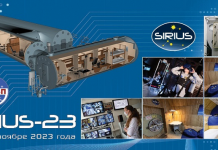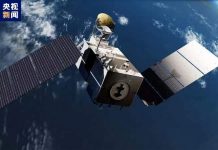The Soyuz-2.1a rocket successfully sent 38 vehicles from 18 countries into orbit
Today, the Soyuz-2.1a booster rocket with the Fregat upper stage, the CAS500-1 spacecraft as the main load, and a cluster of 37 associated satellites launched from the Baikonur cosmodrome at 09:07 Moscow time. After 2 minutes, the side block motors were turned off and separated; after 5 minutes, the second stage separated, and the head fairing was dropped; after 9 minutes, the head unit separated.

The upper stage will execute the program of launching all spacecraft into three sun-synchronous orbits. The separation of the South Korean spacecraft CAS500-1 in the first target orbit will take place 1 hour, 3 minutes after the launch, at 10:10 Moscow. At the second stage, from 11:35 am to 11:37 am, the first batch of associated payload satellites will be separated, and at the next stage, from 13:13 to 13:43, the second batch will be in the third target orbit.
The launch operator is Glavkosmos Launch Services (part of Roscosmos), and this is the first commercial mission of this company. By the way, for the first time in several decades, the Soyuz-2 launch vehicle is presented in an unusual white and blue color scheme instead of the standard gray-orange one. Initially, the start was planned to be carried out on March 20, but it was postponed to the backup date after a technical malfunction revealed before the start.
SpaceX has a special SmallSat Rideshare program to reduce costs by launching a host of vehicles at once for various customers using a single rocket. For the last time, within the framework of such a Transporter-1 mission, a record number of satellites – 143 – were launched into orbit. Roscosmos offers similar services for the launch of several vehicles at once.
Among the key payload, the mission should mention the South Korean spacecraft CAS500-1 remote sensing device to remove “debris» ELSA-d and satellite remote sensing GRUS from Japan, a small unit of Saudi Arabia to produce images of the Earth and provide communication NAJM- 1, communication satellites of the Technical University of Berlin.
The Soyuz-2.1a launch vehicle with the Fregat upper stage will also launch the Higher School of Economics ERS, the CubeSat of the Sirius Educational Center, and the Higher School of Economics as well as the Orbikraft-Zorky satellite of the Russian company Sputniks and others. In total, 38 spacecraft from 18 countries of the world were sent into orbit – a complete list can be found in a separate material.
The Soyuz-2 launch vehicle in a new design was installed on the launch pad of Baikonur on March 17. A little later, the Yuzhny Space Center published a video of how the train left the premises of the assembly and test building of site No. 31, and the rocket was delivered and installed in the launcher:



